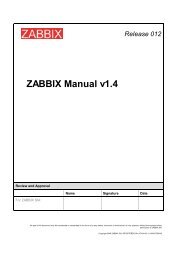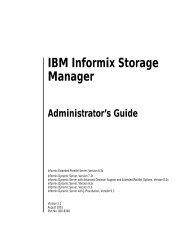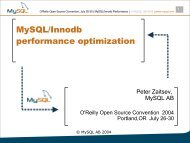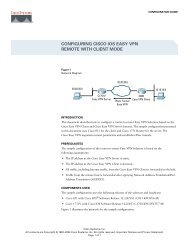OpenVPN Access Server System Administrator Guide
OpenVPN Access Server System Administrator Guide
OpenVPN Access Server System Administrator Guide
You also want an ePaper? Increase the reach of your titles
YUMPU automatically turns print PDFs into web optimized ePapers that Google loves.
2.3 User Authentication and Management<br />
<strong>OpenVPN</strong> <strong>Access</strong> <strong>Server</strong> can manage its own internal database and can also work with a variety of<br />
popular authentication methods. The currently supported systems are:<br />
1. Local: Internal Database authentication<br />
2. PAM: the system for authenticating users with accounts on the <strong>Access</strong> <strong>Server</strong> Linux host<br />
3. Active Directory/LDAP <strong>Server</strong><br />
4. RADIUS <strong>Server</strong>(s)<br />
The user authentication service may reside on the same server as the <strong>Access</strong> <strong>Server</strong> (as is always<br />
the case when PAM is chosen); or it can reside on a completely separate server, as long as the<br />
server is reachable by the <strong>Access</strong> <strong>Server</strong> via either the private or public network. A typical<br />
deployment with an external user database is shown in Figure 5 below.<br />
Figure 5: <strong>Access</strong> <strong>Server</strong> Deployment with External User Database<br />
2.4 Client Configuration Generation and Management<br />
The client files (<strong>OpenVPN</strong> client configuration file and Windows software installer) for a particular<br />
user are automatically created when the user successfully logs in to the Connect Client. This<br />
process takes place without any need for interaction from the administrator, as long as the user can<br />
authenticate against the user database chosen by the administrator during installation of the <strong>Access</strong><br />
<strong>Server</strong>.<br />
<strong>OpenVPN</strong> <strong>Access</strong> <strong>Server</strong> <strong>System</strong> <strong>Administrator</strong> <strong>Guide</strong><br />
8
















